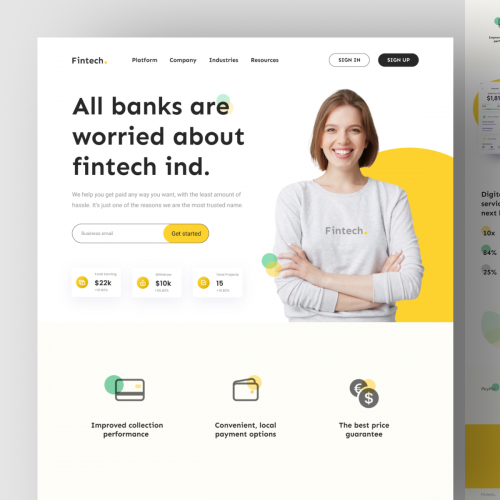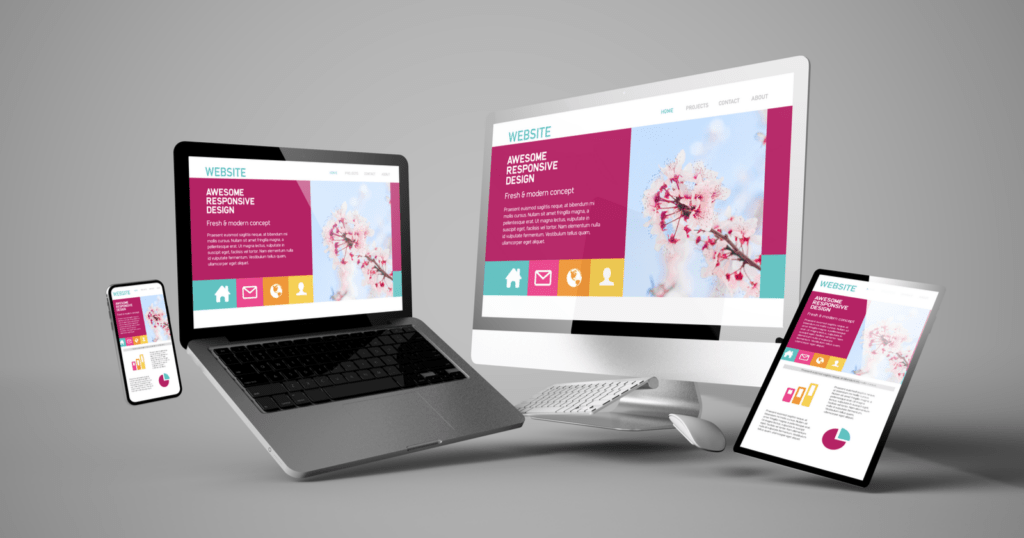Leading Tips for Creating an Impactful Site Design That Transforms
To achieve this, one have to think about a range of variables, including recognizing the target audience, prioritizing user experience, and maximizing for mobile systems. The calculated use of engaging call-to-actions and a distinct aesthetic pecking order plays an essential duty in assisting customers with their trip.

Understand Your Target Market
Recognizing your target audience is fundamental to effective website layout, as it prepares for developing an appealing user experience. Identifying that your users are, including their demographics, choices, and actions, allows developers to tailor the website's web content, format, and performance to fulfill particular requirements.
Carrying out extensive market research is critical in this process. Surveys, meetings, and analytics can provide useful understandings right into user assumptions and discomfort points. By compiling this data, designers can develop user identities that represent various segments of the audience, ensuring that layout decisions are notified and pertinent.
Additionally, comprehending the target market helps in choosing suitable design aspects such as color pattern, typography, and imagery that reverberate with individuals. A website that speaks directly to its target market cultivates a sense of connection and count on, urging longer visits and greater conversion prices.
Ultimately, a user-centered method to site layout not just improves user complete satisfaction however also supports service goals by driving interaction and loyalty. By prioritizing the requirements and preferences of the target audience, a web site can efficiently offer its purpose and achieve desired outcomes.
Prioritize Customer Experience
To boost the total performance of a site, focusing on customer experience (UX) is essential (Website Design). A well-designed UX ensures that visitors can browse the site effortlessly, find information swiftly, and engage with content meaningfully. This results in enhanced customer contentment and greater conversion rates
Begin by executing instinctive navigation. Menus should be practically structured, permitting individuals to situate vital locations of the site with minimal initiative. Uniformity in style elements, such as color systems and fonts, cultivates experience, which is important for maintaining customer engagement.
In addition, think about the filling speed of your internet site. A delay of just a couple of seconds can result in significant drop-offs, as customers are less most likely to wait for a slow-loading web page. Improving photos and enhancing code can improve performance and retain site visitors.
By prioritizing individual experience, you not just develop an extra satisfying setting for site visitors yet likewise strengthen your brand's integrity. Inevitably, an emphasis on UX is an investment in the lasting success of your internet site.
Maximize for Mobile Devices
Enhancing for mobile phones is important in today's electronic landscape, where a boosting variety of individuals access websites through smartphones and tablet computers. A mobile-friendly layout not only enhances user experience yet also plays a substantial function in enhancing internet search engine positions. To achieve this, it is necessary to adopt a responsive design that automatically adapts to different screen dimensions and orientations.

Packing rate is another critical element; mobile customers are generally much less person and anticipate rapid access to info. By focusing on mobile optimization, you make certain that your internet site remains competitive and successfully engages a broader audience.
Usage Engaging Call-to-Actions
A web site's performance commonly rests on its ability to assist site visitors toward preferred activities, making compelling call-to-actions (CTAs) crucial components of layout. CTAs work as the pivotal points that direct customers to involve with the site, whether that implies buying, signing up for an e-newsletter, or downloading and install a source.
To create effective CTAs, quality is critical. Use concise language that clearly interacts the activity you want the customer to take.
Additionally, take official source into consideration utilizing directional hints, such as arrows or photos, to direct customers toward these switches. By concentrating on these aspects, companies can significantly enhance individual involvement, driving conversions and ultimately achieving additional resources their web site's goals.
Concentrate On Visual Power Structure
Effective internet site design counts greatly on a well-structured aesthetic hierarchy that overviews customers via content perfectly. By organizing aspects in a way that prioritizes details, designers can enhance customer experience and facilitate decision-making. This involves using dimension, shade, comparison, and spacing strategically to accentuate the most essential components of review a website.
Making use of bigger font styles for headings and subheadings establishes a clear distinction in between various areas, permitting users to check material effortlessly. Furthermore, utilizing contrasting shades for buttons and calls-to-action can catch individual attention and encourage communication. Whitespace is another important component; it protects against mess and allows users to focus on vital messages without interruptions.
Pictures and graphics ought to enhance the text while likewise adhering to the well established pecking order, enhancing the general message (Website Design). Uniformity in layout aspects, such as color pattern and typography, additional reinforces the visual hierarchy, making navigation user-friendly

Verdict
In verdict, efficient web site layout requires a detailed understanding of the target audience, prioritization of customer experience, and mobile optimization. Inevitably, a well-executed website layout serves as an important part in driving user activities and accomplishing business purposes.